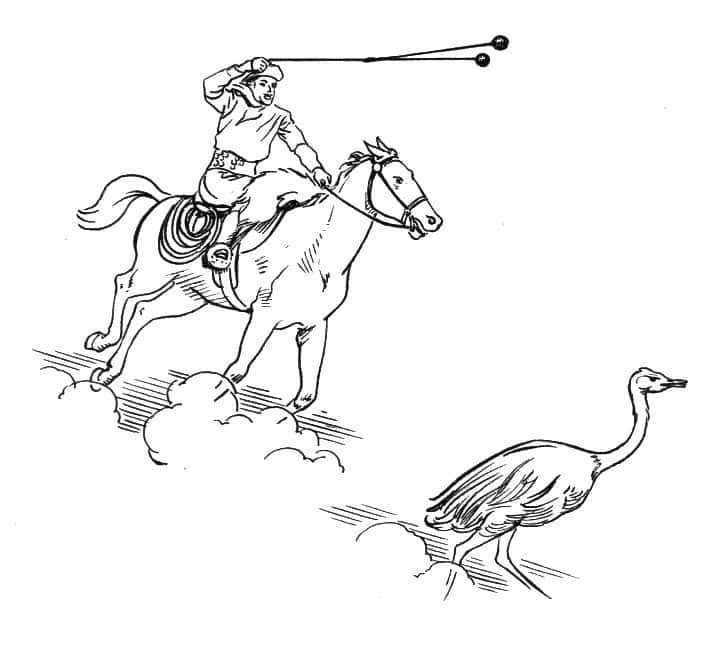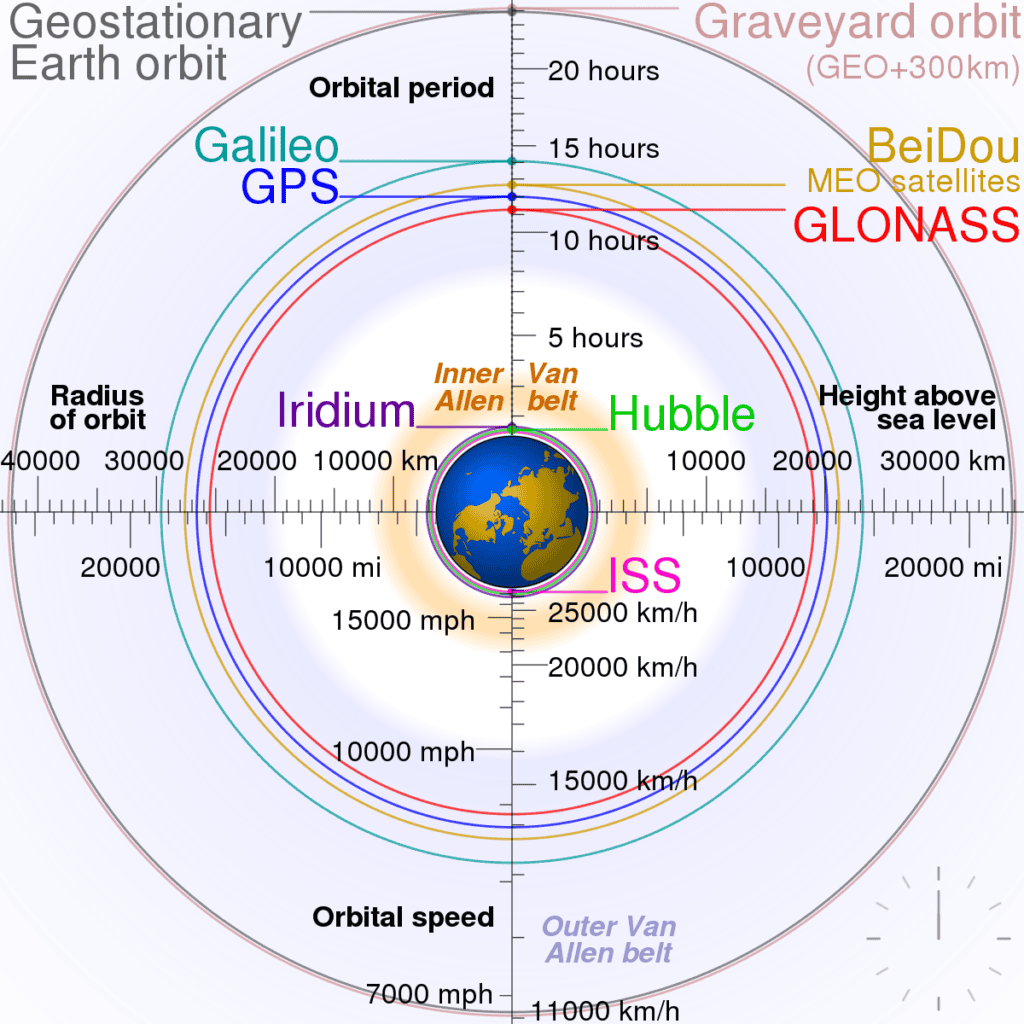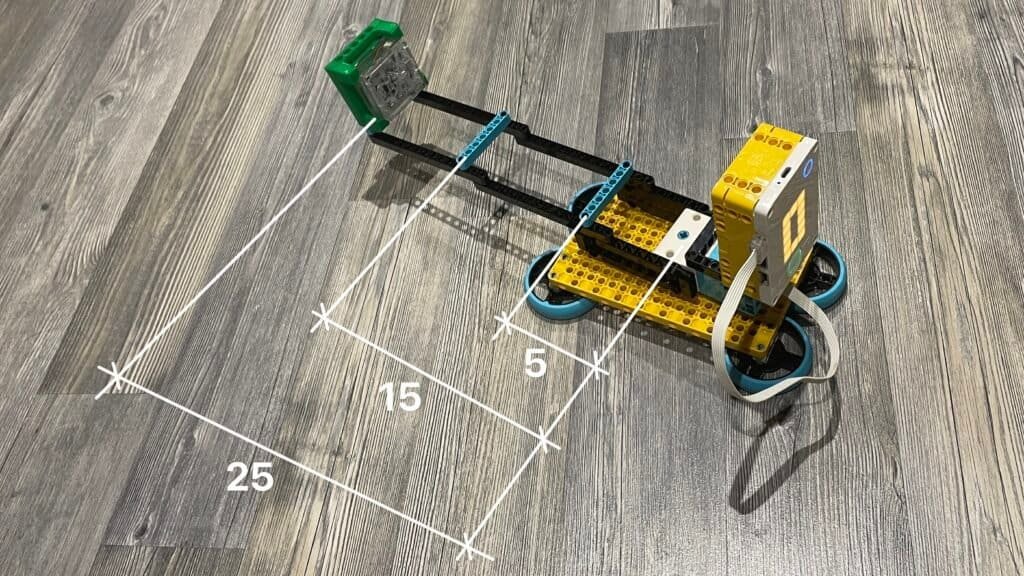Bolo and Orbital Mechanics with databot
Introduction
The goal of this experiment is to explore orbital mechanics by spinning an object attached to string. Imagine yourself as a planet and the object you are spinning is a satellite that orbits around you. In this exploration you will explore how varying the string’s length impacts the speed and behavior of the object, connecting this experience to real-world physics concepts such as orbital motion. In orbital motion the speed of satellites changes based on their distance from the center of gravity (the planet they orbit). databot can provide precise speed measurements, helping to create an engaging hands-on experiment that demonstrates this remarkable phenomenon. First, let’s take a look at a real-world application of orbital mechanics looks like in the bolo, an ancient tool for hunting wild game!
What is a Bolo?
The bolo is a traditional hunting implement originally used for hunting because when thrown, it became entangled around the legs of the animal, immobilizing it. Imagine developing the skill required to be able to chase wild game on horseback, swinging your bolo, and being able to throw it so well and so accurately that you could capture dinner!
Now, let’s explore how this concept relates to orbital mechanics. Just like the bolo, objects in space move in predictable paths due to forces like gravity. When a satellite is launched, it must be thrown at just the right angle and speed to stay in orbit, similar to how a bolo needs precise aim and momentum to successfully entangle its target. Let’s explore this further.

An Analogy between the Bolo and Orbital Mechanics
Rope Length and Orbital Distance:
In a bolo, the length of the rope determines the radius of circular motion. In orbital mechanics, it is equivalent to the distance between the satellite and the center of the planet. The farther the object (or satellite) is from the center, the slower it must move to maintain a stable orbit.
Speed and Stability:
When swinging a bolo, the speed of your weighted object must be fast enough to prevent it from falling due to gravity (centripetal force), but not so fast that it falls out of orbit.
Similarly, a satellite must maintain a certain speed depending on its altitude. The closer it is to the planet, the faster it must move to counteract gravity. This is why low earth orbit (LEO) satellites move faster than those in geostationary orbits.
Satellite Orbits
Some useful information on Earth orbits!
Low Earth Orbit (LEO): Satellites close to Earth (only a few hundred kilometers away) move very fast, about 7.8 km/s, completing a complete revolution in about 90 minutes.
Medium Earth Orbit (MEO): At higher altitudes (about 20,000 kilometers), satellites move more slowly, with orbital periods of several hours.
Geostationary orbit (GEO): At an altitude of about 35,786 km, satellites orbit the Earth in 24 hours, remaining stationary relative to the planet’s surface.

Preparation before the experiment.
The databot experiment will consist of 2 versions.
Version 1: Will consist of “minimal materials”.
For the experiment we will need a databot, a branded bag, and a thread. Of course, we will need a phone or other smart device to monitor the databot in real time using Vizeey.
Version 2: Will be using LEGO® construction. You will need a LEGO Spike prime set, a 3D model of the LEGO attachment to the databot.
“Minimal Materials” Experiment.
1. Turn on the databot.
2. In the Vizeey app, scan the QR code to open the experiment.
3. Place the databot in a branded bag.
4. Securely close the bag to prevent the databot from falling out and tie a rope to it.
5. Start spinning the rope around yourself and then begin the experiment.
Be careful not to hit anything nearby!

Vizeey
I took a 1 meter long rope and started the experiment. I got an average acceleration of 59 meters per second.
I ran into the problem that I can’t spin at the same speed. And that’s normal, we’re human.
I wanted to know how long it takes to make one complete revolution of the databot around me.
Thus, knowing the acceleration and the length of the string, we can find the linear velocity of the object.


Substituting the data into the formula, I got linear velocity – 7.68 meters per second.
The length of the circle along which the databot was moving can be calculated with a simple formula.

The length of my circumference is 6.28 meters.
And now if we make a proportion of the speed of the databot for one second and the length of my circle, it turns out that one turn the databot made for 0.8 seconds.

With the help of the Internet I found out that the speed of the satellite at an altitude of 200 km is 7.79 km/s, which means the satellite travels 1000 times faster than the object I was spinning!
“LEGO SPIKE ” Experiment.
1- To perform the experiment, you’ll need to download the Lego model building instructions
2- For easier attachment of the databot to the Lego model, we’ve developed a custom mount. You can download it and print it on a 3D printer

All calculations are done directly in the experiment.
I conducted 3 experiments at different distances and got these results
Getting Started with the Experiment
Power on the Databot
First, turn on the databot and make sure it’s ready.Launching the Experiment in Vizeey
Open the Vizeey app, find and start the experiment. If the experiment isn’t in your list, you can add it by scanning the QR code provided.Setting Up the Program
Connect your Lego model to the computer and upload the following program to control it.Positioning the Databot
Place the databot at the farthest point on the platform. In the app, input the exact distance between the databot and the center of rotation (axis).Running the Experiment
Start rotating the platform. Once the rotation stabilizes, begin the experiment



At a speed of 3.2 km/s, the satellite will orbit at an altitude of approximately 32,552 km above the Earth’s surface.

If a satellite has a speed of 1.9 km/s, it will orbit at an altitude of approximately 104,037 km above the Earth’s surface

If a satellite has a speed of 0.52 km/s, it will orbit at an altitude of approximately 1,467,635 km above the Earth’s surface.
Conclusion
In conclusion, this experiment provides a dynamic and hands-on way to explore the fundamental principles of orbital mechanics. By swinging databot on a string or using the LEGO rotation contraption, students can see firsthand how the length of the string (or arm) and the speed of the spinning object are directly connected. Just like a satellite in space, the object must find a balance between speed and distance to maintain its orbit.
This experiment not only makes abstract concepts like centripetal force and orbital velocity tangible but also highlights how real-world systems operate under the same laws of physics. Whether it’s a satellite orbiting a planet or a bolo spinning around its thrower, the same principles govern the motion. Through databot’s precise measurements of angular velocity, students can collect real data that mirrors these celestial mechanics, deepening their understanding of how distance impacts the speed required for stable orbits. This engaging simulation connects classroom learning to the wonders of our universe, demonstrating the elegance of orbital motion in a simple yet effective way.
